I too would love to see a videogame that is an exact representation of Amano's art.
The Future of Video Games: Tightening up the Graphics on Level Three
|
|
On 04/19/2012 at 08:37 PM by Julian Titus See More From This User » |
And here we are at part four of my Future of Video Games blog series, written in 2011. You know the drill by now, because you’ve been reading these all week, right? RIGHT?? Anyway, this is going to tie in to the next Tri-Force hosted edition of PixlTalk, so read up and join in the discussion next episode!
There was a letter written to EGM around 1996 that I’ll never forget, because I happened to come across it again around 2002. The letter writer was talking about a game he had just played on his Saturn (I believe it was Virtual Hydlide, of all things) and remarked that video game graphics couldn’t get any better. We had broken the 2D barrier, and there was nowhere else to go.
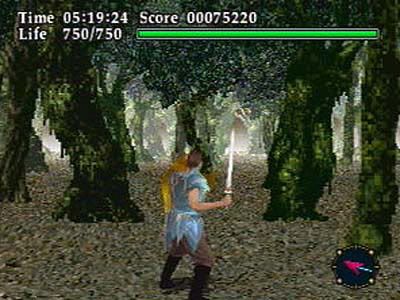
Truly, Virtual Hydlide was the pinnacle of video game graphics.
To think someone would say that about such a forgettable Saturn game is simply absurd by today’s standards, but since video games moved to 3D polygonal graphics, it seems that each generation there are people who get caught up in the shiny newness and exclaim that graphics can’t get any better. There were certainly people who thought that about Nintendo’s Project Reality (Nintendo 64), as well as the Emotion Engine for the PS2 and the Cell processor for the PS3. You can’t really blame people for this hyperbole; there was obviously a drastic shift between the 16-bit era and the PlayStation and Saturn graphics. That seemed like a mere step in the right direction compared to the leap forward seen during the PS2 generation. However, this generation has seen a much more subtle improvement in graphical quality, at least on a superficial level. The characters seen in PSX and Saturn games look like crude depictions of people and creatures, but look back at PS2 or Xbox games and you see much more sophisticated models. The biggest change between the previous generation and today was the move to high-definition visuals, but we’ve already seen that games from the PS2 days can hang pretty well once they get an HD enhancement.
I’m not going to sit here and tell you that the upcoming console generation is going to be the pinnacle; that we’re going to have photo-realistic graphics with no more improvements needed. While we’re definitely getting closer and closer every year, I think once we reach that point there will still be a good generation or two where things will be improving, albeit on a much smaller scale. But we are very close to a new console cycle, and with it shiny new graphics that will make us collectively stop and stare. Since I’m talking about the future of video games this week, I thought I’d talk today about ideas I have for the way studios go about generating art assets, as well as some general daydreaming about what games will look like in the near and far-flung future.
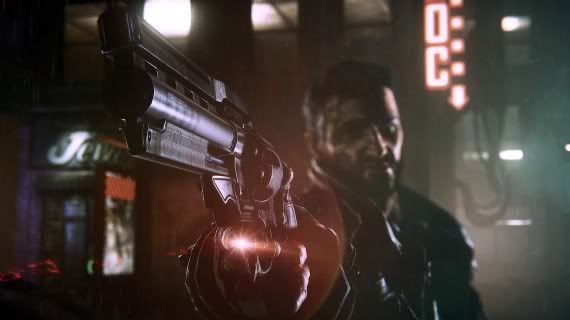
It will be effects and detail, not polygon counts, that define the next generation.
Shooting on Location
It’s no secret that the cost of making games is increasing at an alarming rate. I’d say that, besides piracy, the biggest threat to the industry as a whole is the high cost of generating high-definition art assets. Many smaller studios have not been able to compete, and we’ve even seen the fall of Japan as the major force in the industry because they have not been able to keep up. It’s a problem that will only increase in the coming years, but I think we may be getting to a point where things finally start to even out, and possibly even reverse. I’ve been thinking a lot about how the video game industry could save money on development, and the answers I’ve come up with have their roots in movie production.
Movies that take place in the real world have it pretty easy when compared to the way video games are made. Does your story take place in New York City? Go shoot on location there. If you just need a non-descript metropolis there are plenty around the world. Any place with heavily wooded areas can be made up to look like anything from America 200 years ago to England in the Middle Ages or a mystical elven village. If you need something more specific, you build a sound stage. Back in the days of old Hollywood, it was common for multiple movies to share sets. But it’s a different story entirely for games. You’re going to have to construct New York City from scratch, and it had better look faithful, because people will know if you screwed up. Even with a third-party program like Speed Tree, it can be a laborious task to create a believable forest setting.
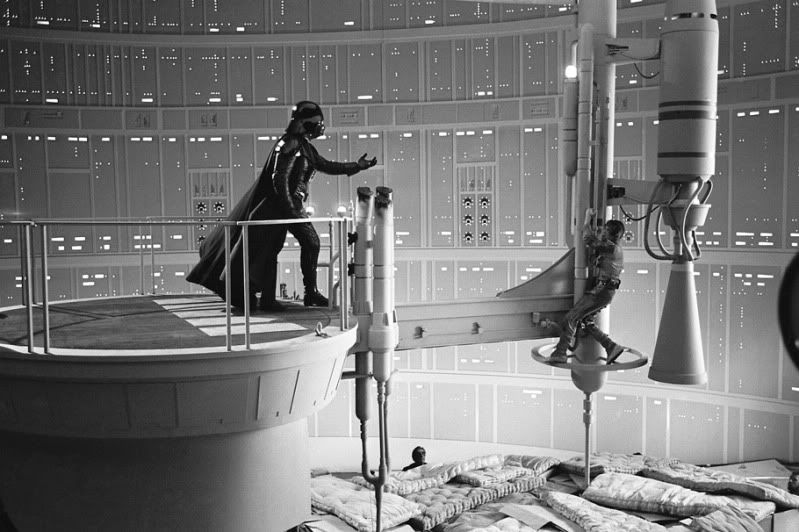
Set design has been a major part of film making for years.
I’m wondering why there isn’t the equivalent of a sound stage for video games. I see a future where there are studios that do nothing more than create environments that can be licensed to various game studios. Think about how many games take place in New York or Los Angeles. Every time a game is set in these cities the production teams spend countless hours and manpower taking reference photographs, figuring out how much of the city to include, and then constructing it. How much simpler (and cheaper) would it be to go to a company that had already done all of that prep work, tell them what you need, and have the assets sent and ready to go? Rome wasn’t built in a day, but once it was, the Romans didn’t have to keep building it from scratch every time a new Caesar came into power.
The same could be done for props and costumes. Much of these smaller art assets are already outsourced, but at the end of the day, a lamp is a lamp, and a table is a table. Why go to the trouble of making new lamps and tables every time you need them? It’s not like the set designers on a movie set build the furniture themselves. They buy it from Ikea just like everyone else. To create detailed, believable worlds it is vital that everything look just right, and that takes a lot of time and money. But if that work has already been done it frees people up to focus more on game mechanics, story, character, and A.I.
Of course, the barrier to this is the fact that so many companies use their own graphics engines. There’s no universal standard, even though Unreal Engine 3 is so prevalent in games today. I don’t think this is a practice that can support itself for too much longer, however. I see graphics engines and toolsets coming closer and closer together as time goes on, until we have a nearly universal system. There are already signs of this on the horizon: John Carmack built the Rage engine to be easy to use on all platforms and scale as needed. There seem to be similar elements in the improvements made to Unreal, and Valve’s Source Engine has become ubiquitous. As graphics engines start to merge and allow for integration of various tools and technology, I see my idea of third-party “set designers” becoming a reality. And as hardware advances I think the software programs and tools needed to create all of this art will eventually become cheaper and more accessible, lowering the bar to entry for up and coming designers, as well as lowering development costs.
Artistic Expression
The problem with my idea of graphics engines merging and becoming more modular is that games may end up looking rather samey. It was something that happened in the PSX days with the middleware known as Renderware, and we see it today with many games powered by Unreal Engine. But this is future talk, is it not? So for the sake of this section, let’s say that we’ve clawed our way out of the Uncanny Valley. Creating hyper-realistic character models is a simple matter for artists now. Video games look so amazing in this scenario that the lines between fantasy and reality have blurred.
So what now? Once you’ve reached that point with game graphics and you can no longer go up, what do you do? Well, if you can’t go up, it’s time to go left. And right. And spread across the great landscape of your artistic expression. I don’t know about you, reader, but I’m kind of done with video games striving to look like real life. I can look out the window and see that. It’s all around me. I play games to experience places and things that I could never reach. What is all that processing power good for if your ultimate goal is to make a city block look just like its real-life counterpart?
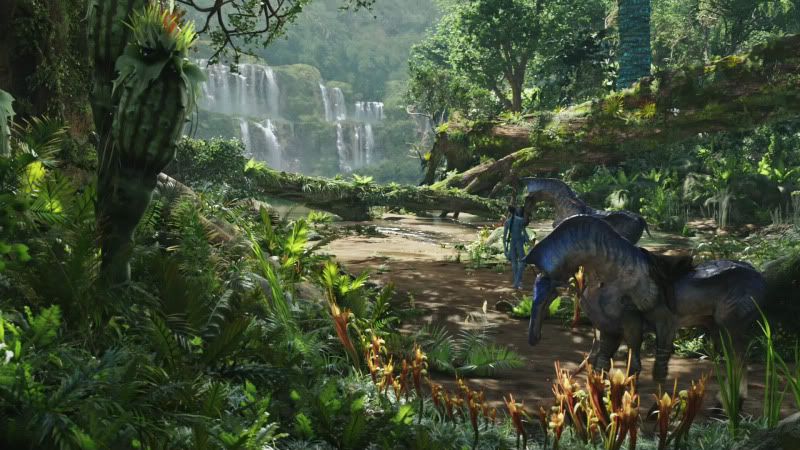
Imagine what the video game equivalent of Pandora would look like.
It’s time to put that technology to good use; to create worlds that could never possibly exist, or visit times in history so far in the past that we have very little knowledge of it. Say what you will about James Cameron’s Avatar as a movie, but I came away impressed with the planet of Pandora and all of its colorful flora and fauna. It was truly a work of science fiction, and I walked out of that movie wishing that I could explore such a world in a video game. Just the thought of it gets me excited for the future of gaming. Imagine a Final Fantasy that, instead of trying to look realistic, instead looks like an actual painting by Yoshitaka Amano. Think about what it would be like to explore worlds with distinct, striking art styles, like the hard neon lights of Tron, or the surreal look of A Scanner Darkly. Ponder, if you will, what Mario and the Mushroom Kingdom would look like on a machine capable of rendering photo-realistic graphics. Would it be the Pixar-created Mario that I’ve always dreamed of, or would it be even better?
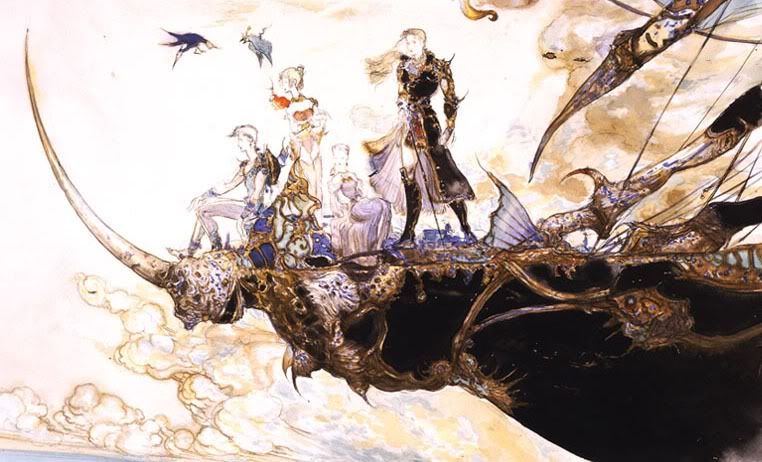
What if Final Fantasy XX was a literal translation of Amano's art?
Of course, this is far in the future. I’d be surprised if we get to this point ten years from now. It will probably take longer than that. But I couldn’t help and daydream for a while. Hopefully you found it entertaining, or at least thought-provoking. Tomorrow, in the final installment of my Future of Video Games series, I’m going to rein it in a bit. I’ll be going over my personal wish list for the upcoming console cycle. I hope you’ll join me.



Comments